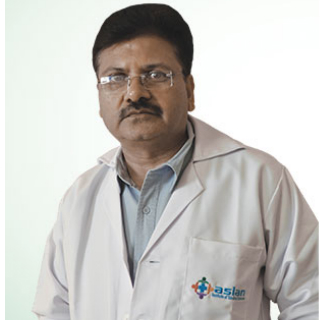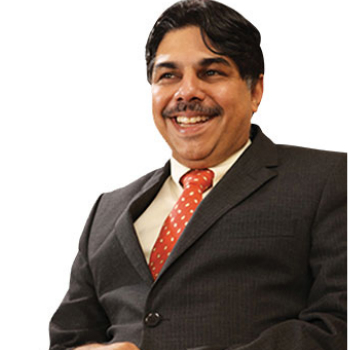
says Professor Kuldeep Jain, Program Director, ASIAN KJ IVF ART Centre, Faridabad, in conversation with Shahid Akhter, ENN
Please dwell upon some of the most revolutionary reproductive therapies that can aid in curing infertility.

In the last three decades, mainly three high-tech advances have taken place which had revolutionised the management of infertile couples. Apart from ART (IVF), endoscopic surgery and ultrasound have made significant contribution to the treatment of infertility and providing parenthood to so many couples.
What are the treatment options, and who is an ideal candidate for IVF?
Treatment options are many depending on the causes of infertility ranging from ovulation induction with drugs to surgical correction of endometriosis and tubal factor to IUI for male and unexplained factors, and finally IVF and ICSI for difficult cases who cannot conceive with simpler techniques.

What diagnostic tests do you consider before suggesting IVF?
Basic tests like TVS, hormonal profile, semen profile, test to rule out STD, hysteroscopy to uate endometrium, AMH for ovarian reserve are various diagnostic tests before proceeding for IVF.
How do you commence the treatment of unexplained fertility?
If we dont find any obvious abnormality after routine uation but patient is unable to conceive she is grouped as unexplained infertility. Many of these patients can be benefitted witha simple procedure called SOIUI. Drugs are given to increase the number and quality of eggs and processed sperm are inseminated in the uterine cavity. It is a cost-effective method to achieve desired outcome. It may take at least four cycles to give full benefit of IUI before moving on to more advanced procedures like ICSI.
What difficulties do you face while convincing IVF couples?
There are a lot of myths related to IVF. It is believed by most of the people that IVF is unnatural, and always done with donor semen. Another concern of many couples is that it is having a lot of side effects, painful and children are born abnormal. Cost is another concern which takes a lot of time in counselling. IVF is usually considered asthe last resort by most patients, which is not true. In fact, for tubal and male factors, IVF may be the first choice. Then there are religious issues which need to be addressed. Thus, counselling is an important part at our centre.
Have aids such as ovulation kit, helped or harmed the modern couple?
Ovulation kit is Okay for initial phase for self monitoring. However, if there is no conception within a reasonable time-frame, one must consult infertility expert as time is precious in infertility management.
How do you resolve the chances of multiple births?
Multiple birth is an unwanted complication of infertility treatment. One has to observe a balanced approach to minimise this complication. In India, acceptance for twins is quite high. In fact, many couples prefer twins. Policy of single embryo transfer in selected cases helps in reducing multiple birth.
Please tell us something about the embryology lab at your centre.
Our IVF lab at ASIAN -KJIVF ART centre is a hi-tech ultra-modern lab fitted with Coda Aero and HEPA filters with dedicated AHU for cleanest atmosphere for developing embryos. The lab is equipped with Supraclean Laminar workstation, Nikon dissecting, Stereozoom Microscope and 4th generation Nershighe-Nikon manipulator for advanced procedure like ICSI. We are providing advanced facilities like ICSI, Blastocyst Culture, Assisted Hatching, Sperm Bank, egg donation programme, surrogacy programme, PESA/ TESA and other advanced procedures.
What is the success rate of IVF at your centre, and your USP?
Our IVF team is consistently providing success rate at par with the best of centres across the globe. Our success rate has crossed 47 percent for people below 35 years of age. Cumulative pregnancy rates for three cycles are up to 70 percent. Our USP is trans parency, individualised approach and in-house expertise with all facilities under one roof.
How do you see the growth of medical tourism by way of IVF?
India is a favored destination for IVF and surrogacy for overseas patients because of great infrastructure, lowcost and world-class expertise. Projected growth of medical tourism in IVF sector is phenomenal
How does the cost and services of IVF in India compete with other competitive nations?
Low cost combined with at par results and world-class infrastructure is Indias USP. We can beat any nation on that front.
Can you think of any government initiative that can make IVF more cost effective?
Yes, government needs to be more proactive. Low taxes and low-import duty will go a long way in cost reduction. Also, Indian Pharma industry should be encouraged to put in more efforts in research so as to bring outmore indigenous products of international standards. That will certainly reduce the cost of treatment. Another important area is insurance sector. This is must for making advanced services available to the masses. The government has got an important role there too.
“Our USP is transparency, individualised approach and in- house expertise with all facilities under one roof”
What services do you offer by way of surrogacy?
We offer surrogacy to genuine couples who are having problems in there uterus. We do observe all legal and ethical obligations. Our surrogacy programme is very transparent and the most sought-after programme.
Surrogacy is commercial and legal in India but getting tainted. As you offer surrogacy services, what do you think is the biggest challenge facing the surrogacy industry in India today?
At present, the ART scenario including surrogacy is self regulated as there is no law governing the segment. Though there are ICMR guidelines to follow, however, there are issues related to agencies providing surrogates which is fractured at present, and controlled by people who may not be well aware of various issues related to legal and ethical aspects.
How do you envision the future of IVF in India?
As far as future of IVF is concerned, it is quite bright. This is a challenging time for industry. The whole world is looking at us with curiosity to see how we evolve ourselves. We require a strong regulatory authority which will help prevent mushrooming of ART centers, regulate third-party reproduction, help service providers, promote research and education, and take along all stake holders. Role of societies like the Indian fertility society and ISAR is very important in shaping the future of ART sector. I see India as the ART capital of world in coming years
Be a part of Elets Collaborative Initiatives. Join Us for Upcoming Events and explore business opportunities. Like us on Facebook , connect with us on LinkedIn and follow us on Twitter , Instagram.









